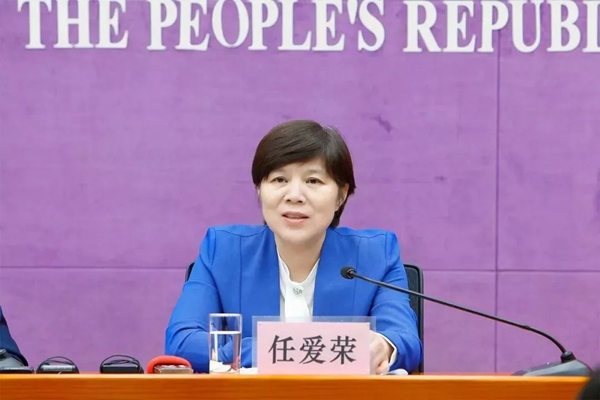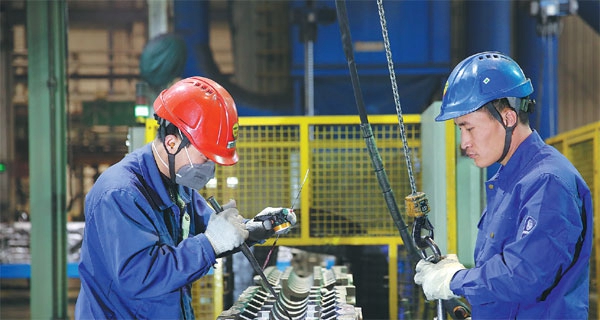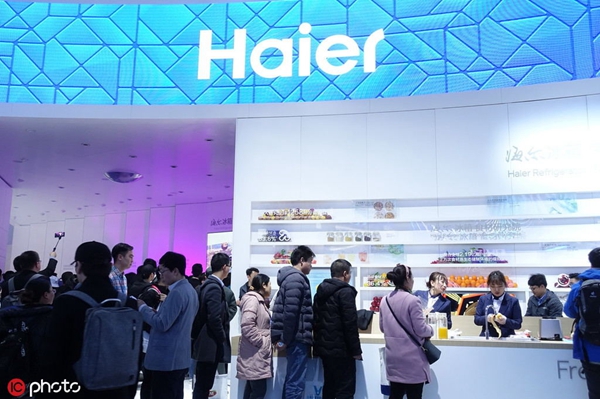Shandong generates growth with global strategy
(chinadaily.com.cn)|Updated : 2019-08-22
The Qingdao Multinationals Summit will be held from Oct 19 to 20 in the eastern coastal city of Qingdao, Shandong province, said officials at a news conference of the Ministry of the Commerce on Aug 21 in Beijing.
As a publicity activity to push the country’s opening up to a new level, Qingdao will set up a new platform for multinational companies to increase exchanges, enhance mutual trust, and expand cooperation with the country.
About 490 of the Fortune Global 500 have invested in China, according to the Ministry of Commerce, and nearly half of them have invested in Shandong.
As an economic powerhouse in the eastern coastal area, Shandong has introduced a large amount of international capital since the reform and opening up, with many multinational companies setting up factories and branches in the province.

Ren Airong, vice-governor of Shandong province. [Photo/WeChat account: SDBNews]
By the first half of 2019, a total of 216 Fortune Global 500 companies have invested in 756 projects in Shandong, promoting the development of industrial clusters, such as heavy trucks, automobiles, construction machinery, shipbuilding, and information technology, playing an important role in the industrial upgrading of Shandong, said Ren Airong, vice-governor of Shandong province at the news conference.
In the field of automobiles, Shandong has attracted MAN Truck & Bus, Volkswagen, General Motors, Hyundai Motor, and other world’s top 500 companies, which has improved the development of the province’s automobile industry.
In the field of construction machinery, the introduction of Komatsu, Caterpillar, Volvo, and Doosan has also made Shandong a key construction machinery powerhouse in the country.
In the field of modern finance, Munich Reinsurance Company, Sanpaolo IMI, MUFG Bank, Mizuho Bank of Japan, and other international financial institutions have been expanding their investment in the province, injecting vitality to Shandong’s development.
Data from the Shandong provincial department of commerce showed that in the first half of this year, 17 Fortune Global 500 companies, including Bosch, DHL, Korea Electric Power Corporation, and AEON Corporation of Japan, invested in 30 projects in Shandong, and that the number of enterprises and projects increased by 13.3 percent and 15.4 percent respectively.
According to Shandong provincial department of commerce, in the first seven months of the year, 1,300 foreign-invested enterprises were established in the province, up 8.9 percent year-on-year. The actual utilized foreign investment reached 46.87 billion yuan ($6.63 billion), up 9.5 percent.
While the province is implementing the strategy of “bringing in” multinational corporations, Shandong-based enterprises are also actively “going out” to participate in the global market.
Haier Group and Shandong Heavy Industry Group, as representatives of Shandong’s multinational corporations, will host a special forum during the summit to discuss industry development trends with participating enterprises, as well as generate cooperation opportunities with mutually beneficial results.

Technicians at Weichai Power, a leading company in Weifang, Shandong province, carry out quality inspections at a production line. [Photo provided to China Daily]
Weichai Group, a heavy-duty engines manufacturer subordinate to Shandong Heavy Industry Group, has transformed from being solely an engine-maker until 2009 into its current status as a conglomerate that boasts a global presence across powertrain systems, smart logistics, automotive, construction machinery, and luxury yacht sectors. The group has successfully expanded into markets in Southeast Asia, South Asia, the Middle East, North Africa, and Europe.
In 2018, the overseas business accounted for 40 percent of Weichai’s revenue, which totaled 236 billion yuan, and its overseas subsidiaries were all profitable.
The Indian branch of Shandong Heavy Industry Group has produced and sold 20,153 engines in total, with an income of $110 million since its establishment, becoming a competitive player in the South Asian market.

People visit the stand of Haier Group, one of China’s leading home appliance makers, during an exhibition in Shanghai on March 10, 2018. [Photo/IC]
Haier Group, the country’s largest home appliances manufacturer, has continued to develop its brand overseas, guide international standards, and capture high-end markets.
In 1999, its first overseas industrial park was established in the United States. In 2005, it began to enter the stage of global brand development. In 2012, it acquired Sanyo Electric Co’s washing machines, refrigerators, and other businesses in Japan and Southeast Asia. In November 2012, it acquired New Zealand’s high-end household appliance brand Fisher & Paykel. In January 2016, it signed a strategic cooperation memorandum with GE to integrate the appliance business of GE.
To date, Haier has established five global R&D centers, 24 overseas manufacturing plants, 21 industrial parks, and 66 marketing centers. It has created a three-in-one localization model, combining design, manufacturing, and sales to provide ongoing support for global brand development.
In addition, a growing number of Shandong-based brands and companies have developed their names overseas, including the Chinese server maker Inspur Group, whose major projects have covered half of the countries and regions involved in the Belt and Road Initiative, as well as China’s leading coal mining company Yankuang Group, which has entered the markets of Australia and Latin America.
Private enterprises in Shandong also play a vital role in implementing the “going out” strategy.
According to the province’s Federation of Industry and Commerce, 28 of Shandong’s top 100 private enterprises have made overseas investment, involving 39 countries and regions on six continents.












